Chemistry Buildings
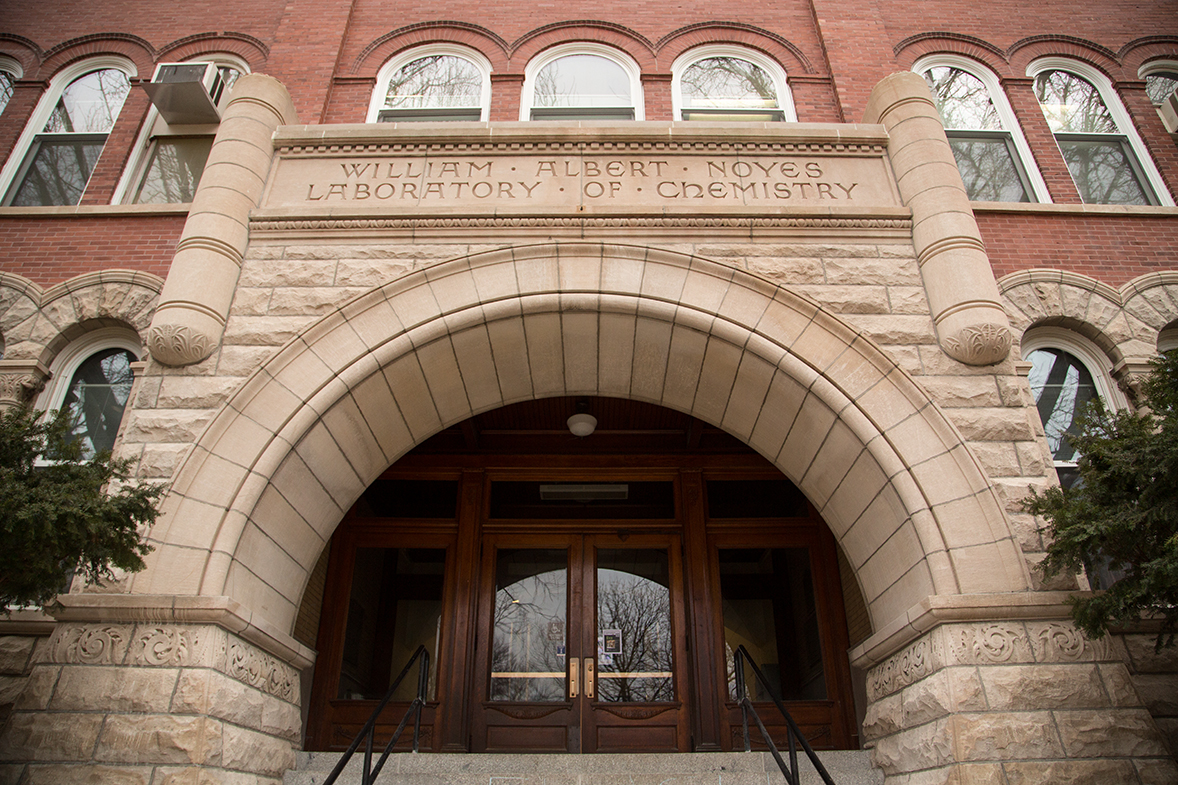
The Department of Chemistry is housed in four buildings: William Albert Noyes Laboratory (NL), Roger Adams Laboratory (RAL), Chemistry Annex, and the Chemical and Life Sciences Laboratory.

The administrative offices and Chemistry Library are housed in Noyes Lab, and service facilities and technical shops are found in both RAL and NL. Most general chemistry laboratories are in the Chemistry Annex. The Chemistry Annex is dedicated completely to undergraduate education in the chemical sciences. Research laboratories for inorganic, physical, and materials chemistry are housed in the Chemical and Life Sciences Laboratory, and those for analytical, organic, and biological chemistry are located in Roger Adams Lab. In addition, a few of the Department's research groups also have laboratories in the Materials Research Laboratory, Carl R. Woese Institute for Genomic Biology, and Beckman Institute, all of which are interdisciplinary facilities of the campus.
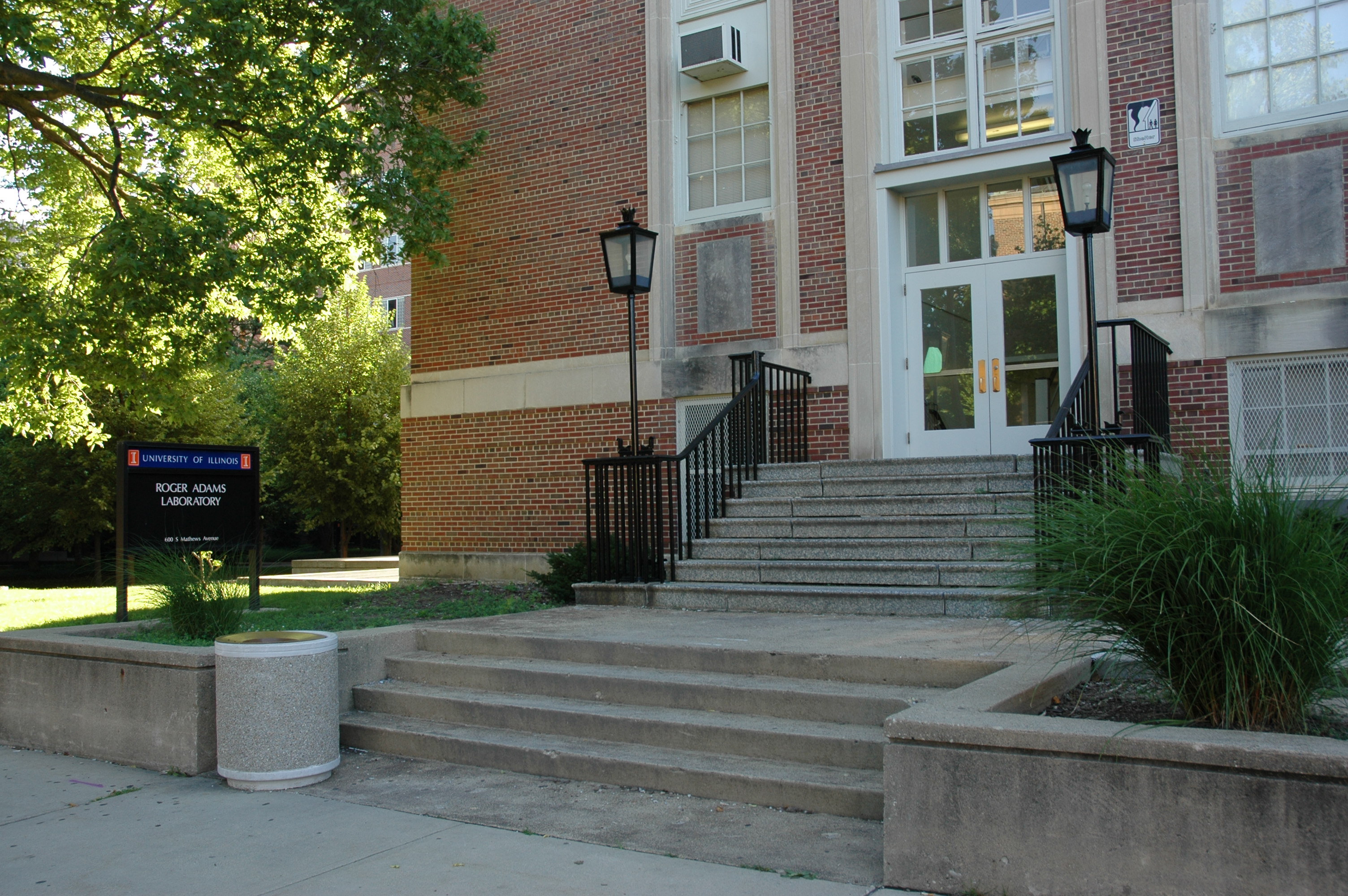
Research Support Facilities - School of Chemical Sciences
Some of the greatest assets to researchers at Illinois are its extensive research facilities. The School of Chemical Sciences provides the nation's best and most extensive service facilities for research and education in chemistry. Each service facility has its own full time staff providing expert technical assistance. They range from facilities that maintain advanced scientific equipment to facilities that provide graphics and computer support. A more detailed description of the different facilities follows below.
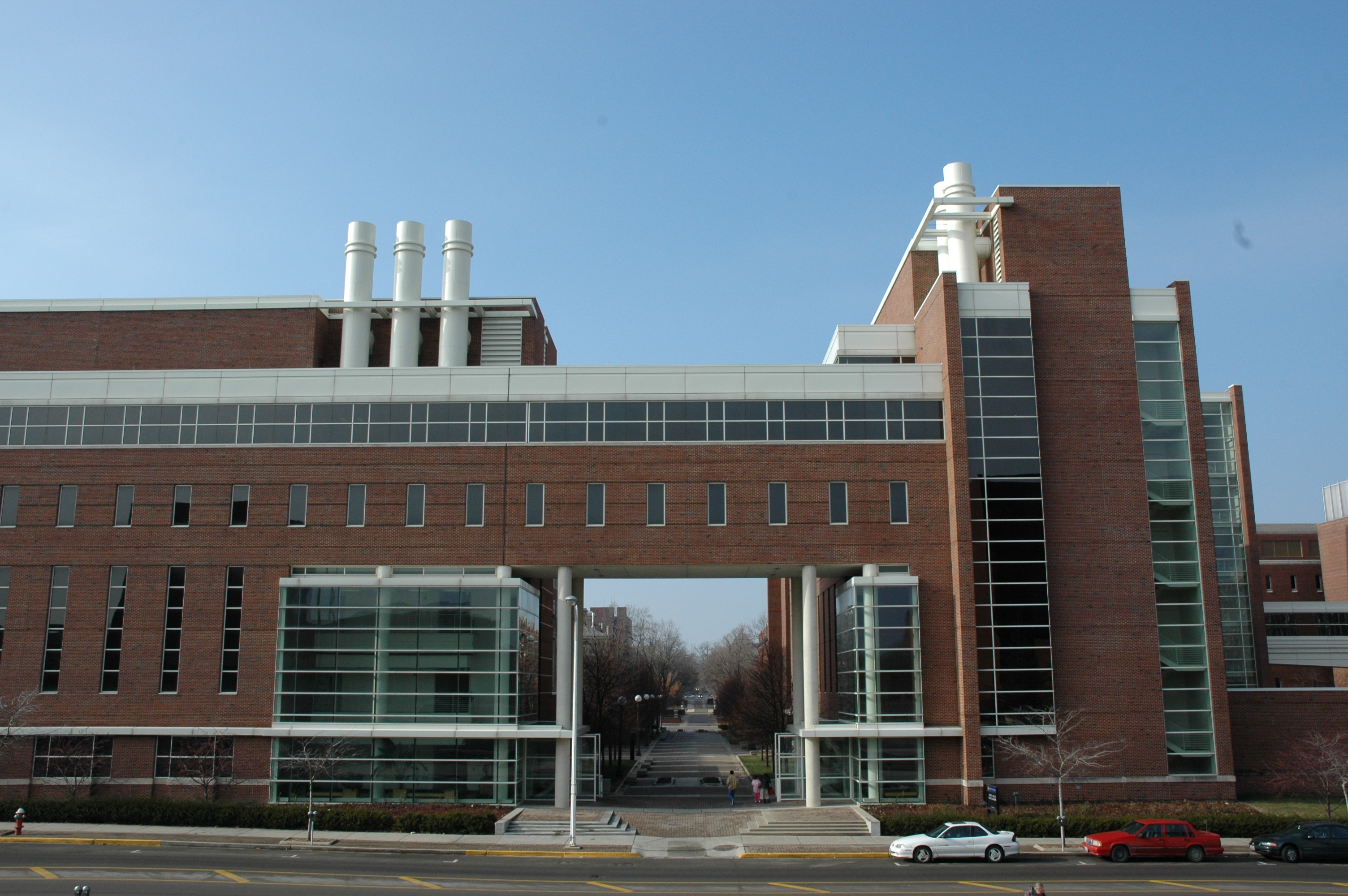
Click on the facility name to be taken to the School of Chemical Sciences site for more details.
Cell Media Facility - provides the materials required to grow and work with bacteria, yeast, insect cells, and animal cells.
Computer Applications and Network Services (CANS) - provides assistance with all network issues and advanced software packages.
Computer Electronics Electrical Services (CEES) - provides assembly, repair, and maintenance of computers and other electronic equipment.
Electron Paramagnetic Resonance Lab (EPR) - provides EPR, ENDOR, and ESEEM facilities and expertise.
Graphic Services - provides a range of conventional photographic, electronic imaging, technical drawing, and graphic design services.
Glass Shop - provides glassware repairs, and design and fabrication of customized glass equipment.
High Pressure/Hydrogenation Lab - reactions can be performed at high temperatures and/or high pressures in equipment designed for those purposes.
High-Throughput Screening Facility - assists academic researchers in developing and performing high-throughput screens of chemical libraries.
Machine Shop - provides design and machining of customized equipment, especially ultra-high vacuum, high pressure, optical and mechanical equipment.
Mass Spectrometry Center - provides varied services with capabilities in all modern methods of mass spectrometry. Microanalysis Laboratory - provides elemental analysis (CHN, ICP, titration) and thermal analysis (TGA, DSC).
NMR Laboratory - the finest academic laboratory in the country in terms of the availability and types of services offered.
X-Ray Diffraction Laboratory - a valuable asset for single crystal and material analysis.
Chemistry Library

The Chemistry Library, located in 170 Noyes Laboratory, is one of the oldest chemistry research libraries in the country. The Library collects materials covering all aspects of chemistry and, chemical and biomolecular engineering and provides online access to all journals and e-books published by the American Chemical Society, Wiley, Elsevier, Springer, and the Royal Society of Chemistry. Research databases include SciFinder Scholar, Scopus, Reaxys, and Web of Science. Reference materials such as the CRC Handbook of Chemistry and Physics, Kirk-Othmer Encyclopedia, e-EROS, and several Crystallography databases are all available online. The Chemistry Library was remodeled in 2006 and offers individual study spaces, an interactive group collaboration room, and a large conference room with projection equipment and teleconferencing capabilities. Scanning equipment and a public printer are also available.
University Library
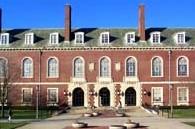
The University Library's resources for augmenting a chemistry student's technical education are outstanding. No state university and only two other American colleges and universities have more extensive collections. The present library collection totals more than thirteen million volumes. Collections in the biological sciences, engineering, materials science, physics, food science, and geology complement the chemistry collection and are easily accessible. The Grainger Engineering and Mathematics Libraries have collections and services of interest to chemistry and chemical engineering students, staff and faculty.
Arnold O. and Mabel M. Beckman Institute for Advanced Science and Technology
The Beckman Institute for Advanced Science and Technology is an interdisciplinary research institute devoted to basic research in the physical sciences, computation, engineering, biology, behavior,and cognition.
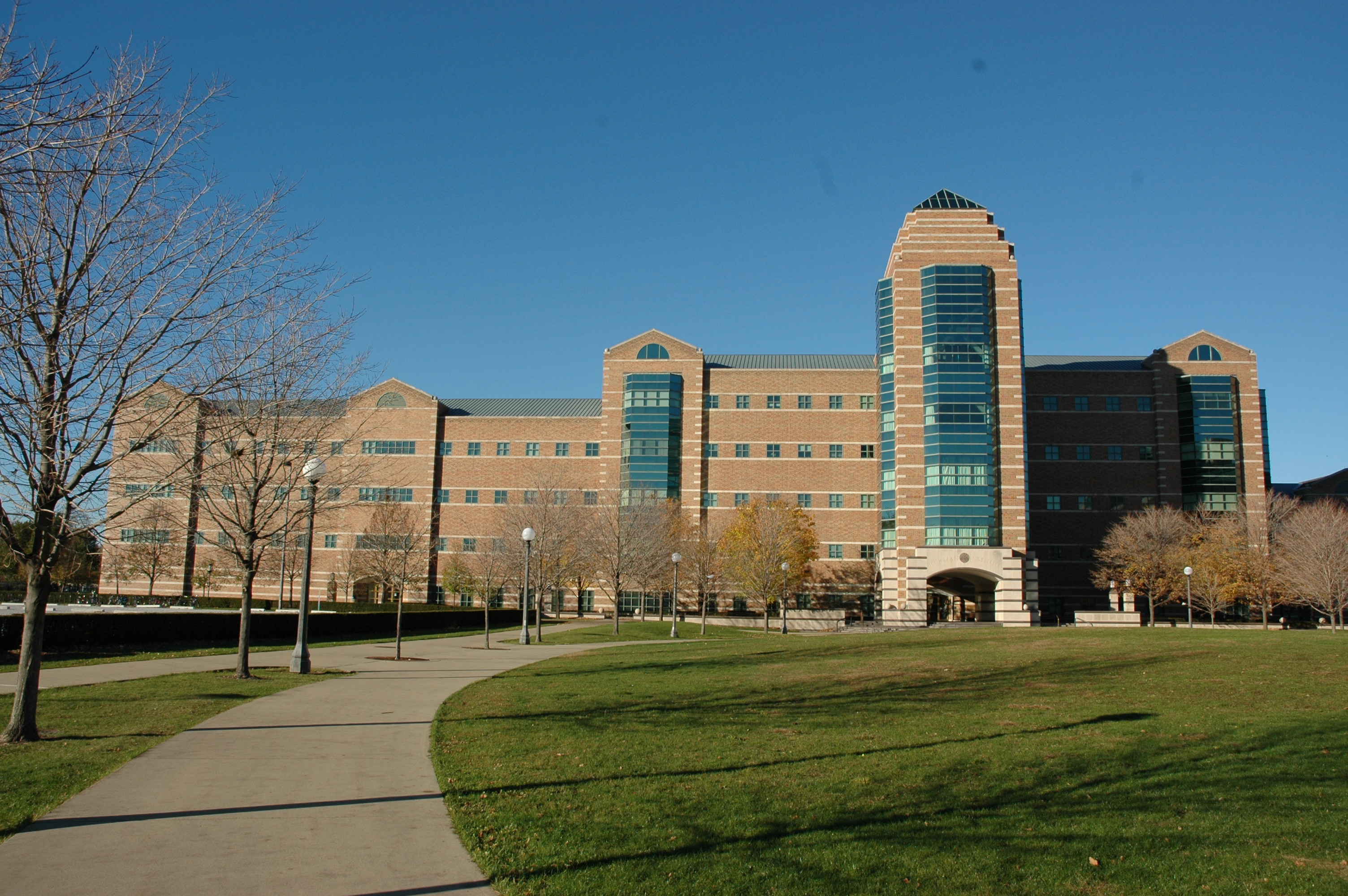
According to their website, the institute's primary mission is to foster interdisciplinary work of the highest quality in an environment that transcends many of the limitations inherent in traditional university organizations and structures.
Research at the Beckman Institute is categorized into four broad themes to provide faculty with a loose organizational framework. The Beckman Institute’s interdisciplinary approach allows areas of study to overlap within and across these research themes. The themes are Biological Intelligence, Human-Computer Intelligent Interaction, Integrative Imaging, and Molecular and Electronic Nanostructures.
The Institute was founded on the premise that reducing the barriers between traditional scientific and technological disciplines can yield the greatest advances. Research is focused broadly around four themes: Biological Intelligence, Human-Computer Intelligent Interaction, Integrative Imaging, and Molecular and Electronic Nanostructures. The 313,000-square foot building was made possible by a gift from Arnold and Mabel Beckman. More than 1,500 faculty, students, and postdoctoral and other associates are actively engaged in research at the Institute.
Micro and Nanotechnology Laboratory
The Micro and Nanotechnology Laboratory is a multidisciplinary research facility in the College of Engineering that houses advanced equipment to support research in photonics, microelectronics, nanotechnology, and biotechnology. The research activities that are facilitated by the laboratory can be divided into four areas: optoelectronics and photonic systems, microelectronics for wireless communications, microelectromechanical systems, and nanobiosystems.
The Microelectronics Laboratory is one of the nation's largest and most sophisticated university-based facilities for semiconductor, nanotechnology, and biotechnology research. It contains 8,000 square feet of class 100 and class 1,000 clean-room laboratory space and state-of-the-art ultra-high-speed optical and electrical device and circuit measurements. The laboratory currently houses the DARPA-funded Center for Bio-Optoelectronic Sensors and Systems.
Carl R. Woese Institute for Genomic Biology
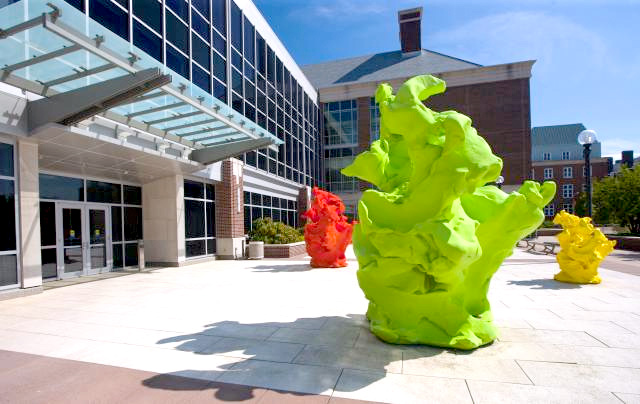
The Carl R. Woese Institute for Genomic Biology is an interdisciplinary institute whose physical infrastructure was completed in 2007. A significant number of Department of Chemistry faculty members are affiliated with the institute in various areas.
Synopsis of research from their web site:
Research at the IGB falls under one of three broad Programmatic Areas: Systems Biology, Cellular and Metabolic Engineering, and Genome Technology. More than 120 faculty members from 30 departments across the University of Illinois are conducting research into the pressing problems that confront our society. And while we do groundbreaking research, we also understand the importance of engaging with our community and educating the next generation of scientists – more than 600 students and postdoctoral researchers also work in the IGB.
National Center for Supercomputing Applications (NCSA)
The National Center for Supercomputing Applications at the University of Illinois at Urbana-Champaign has an international reputation for innovative applications in high-performance computing, visualization, and desktop software.

In 1993, NCSA Mosaic, the Web browser that launched the multibillion-dollar dot.com industry, was developed at the center. NCSA is the leading site for the National Computational Science Alliance (Alliance), conducting research at the forefront of supercomputing technology, high-speed networking, and virtual reality.
The National Petascale Computing Facility houses Blue Waters, a petascale supercomputer, that is one of the most powerful in the world and is used by researchers nationwide.
Roy J. Carver Biotechnology Center
The Roy J. Carver Biotechnology Center is an interdisciplinary program that includes 127 faculty members from across campus, including Chemistry. Its primary mission is to augment research in biotechnology at the University of Illinois at Urbana-Champaign by
- providing state-of-the-art research services to University of Illinois faculty members and facilitating interdisciplinary research,
- promoting educational, training, and career opportunities for undergraduates, graduate students, and postdoctoral fellows,
- conducting outreach activities for K-12, the public, and corporate clients, and
- creating corporate partnerships in research.
The major research facilities are the W. M. Keck Center for Comparative and Functional Genomics, Flow Cytometry Facility, Immunological Resources Center, and Protein Sciences Facility. In addition, the Roy J. Carver Biotechnology Center Placement Office provides job placement for advanced-degree students in the biological and biomedical sciences.
Materials Research Laboratory (MRL)
The Materials Research Laboratory, an interdisciplinary research laboratory dedicated to developing the highest-quality fundamental interdisciplinary programs in materials science, condensed matter physics, and materials chemistry, is a DOE national facility. The MRL provides a highly stimulating environment for a community of scholars from 10 departments, including Chemistry. The physical facility includes 160,000 gross square feet of space in three contiguous buildings.
The theme of the interdisciplinary research carried out in the MRL is nano-scale systems: surfaces, interfaces, and structures. The primary themes are: surface, interface, and thin-film science, nanoscale synthesis and mesoscale engineering, complex materials systems, driven materials systems, biomimetic materials synthesis, and solid-liquid interface science and confined fluids. Within MRL is housed the Center for Microanalysis of Materials (CMM), which contains a complete array of modern nanostructural and nanochemical analytical techniques, including electron microscopy (scanning-, transmission-, and scanning-transmission electron microscopy), scanning probe microscopy, surface microanalysis, x-ray scattering, and ion-beam spectroscopies, as well as synchrotron beam lines at the Advanced Photon Source, Argonne National Laboratory, and at the National Synchrotron Light Source, Brookhaven National Laboratory.